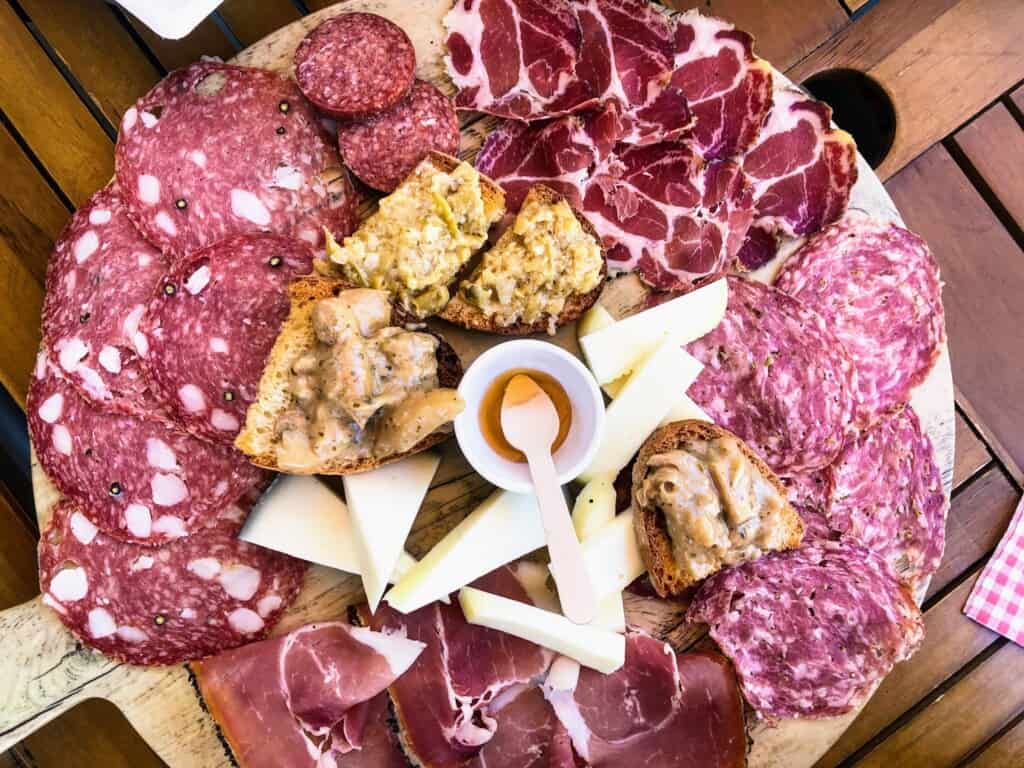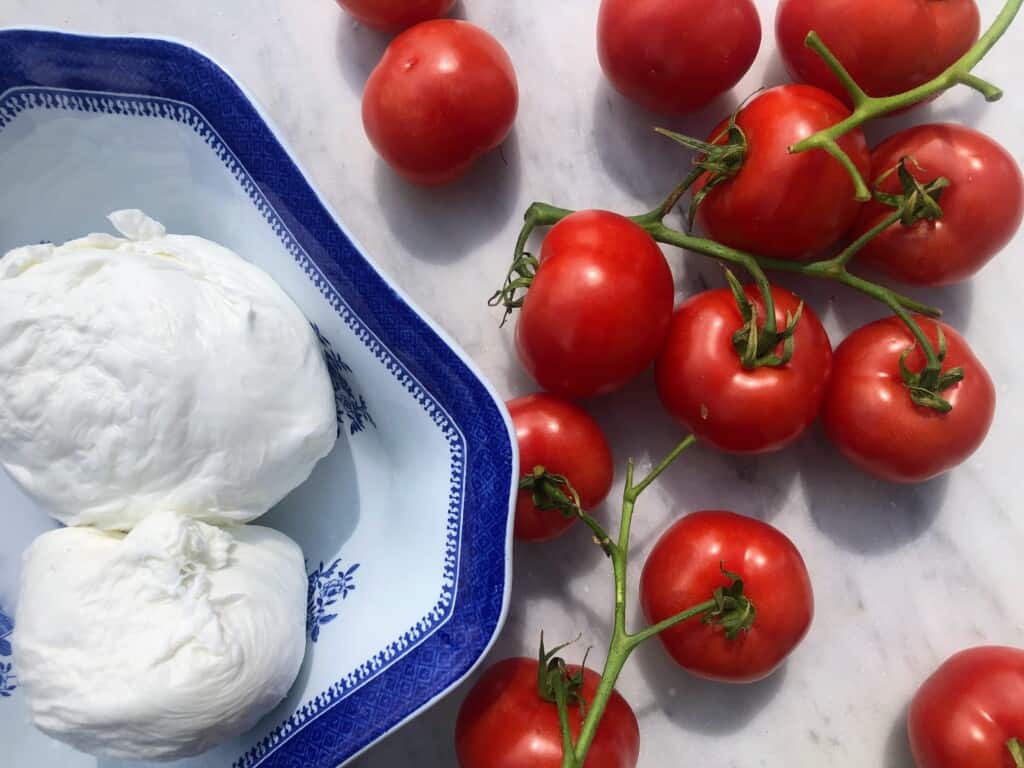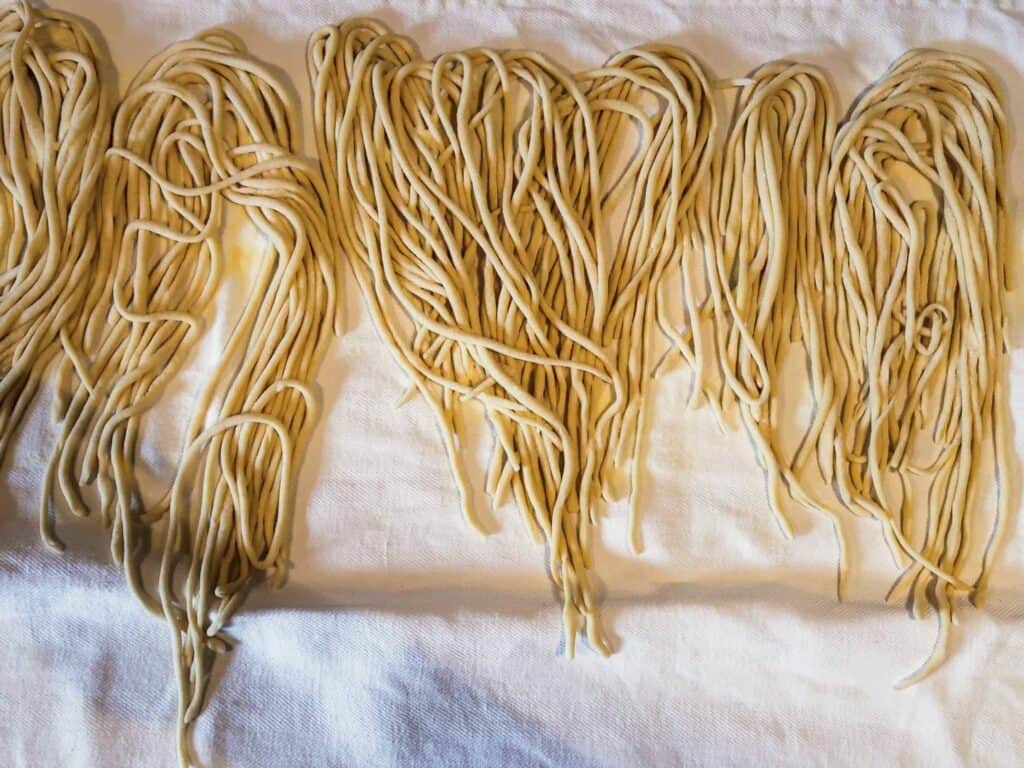Last updated on November 17th, 2023
Low and behold the Italian charcuterie board. How we all dream of them and look to recreate them at home. It’s not as easy as it looks though as it takes a bit of thought and planning to build an Italian charcuterie board.
Whether you are looking to host a party, have friends over for cocktails or looking to make an Italian themed charcuterie board to shake things up, it’s important to learn the ABC’s when it comes to how to create them, what to put on them and most important, what NOT to put on one.
In this article, I will share with you how to build an Italian charcuterie board at home, even if you live outside of Italy. Just as important as what to include, I will also explain what not to include when making an Italian charcuterie board.
Jump to Section
Italian Charcuterie Board in Italian

Italian charcuterie board in Italian is called a tagliere, pronounced tahl-yeh-reh. The word tagliere in Italian means ‘cutting board’, referring to the various cuts of cured meat on the serving board or platter.
Fact: Cured meat in Italian is called salumi.
Sometimes, a tagliere will also be called un tagliere di salumi or affettati, literally meaning a cured meat charcuterie board.
Listen to the pronunciation of tagliere:
Fact: The plural of tagliere is taglieri.
What Is An Italian Charcuterie Board?

An Italian charcuterie board or tagliere is a mixed cured meat board served in Italy typically as an appetizer before the first course or with a glass of wine as an aperitivo before you sit down to dinner.
An Italian charcuterie board changes drastically depending on which region you are visiting in Italy because they are made with the locally produced cured meats, which include anything from prosciutto and sausage to mortadella and salami.
They will typically have several different varieties of cured meats, all of which will have a distinct texture and flavor.
An Italian charcuterie board will be accompanied by the locally made bread of that region. For example, in Sardinia you will get pane carasau but in Tuscany you will always be served pane toscano.
What An Italian Charcuterie Board Isn’t

When ordering and recreating Italian charcuterie boards, you might notice that they are chalk full of other ingredients such as cheese, fruits and jams. This is not typical in Italy unless you are ordering un tagliere misto or mixed board, which will also include cheeses as well as Italian meats.
A tagliere di formaggio is a cheese board with regional cheeses and sauces or other fruits and/or nuts that pair well with those specific cheeses.
Ingredients Not On An Italian Charcuterie Board

Here is a list of the most common ingredients you will not find on your tagliere when you are in Italy:
- grapes
- crackers
- cheese
- jams
- breadsticks
- jarred vegetables such as artichokes and olives
- balsamic glazes
- olive oil
Good To Know: Because many of Italy’s most visited cities such as Rome, Florence and Venice are catering to mass volume of tourism, some very central restaurants buy into “American-style” charcuterie boards including some of these ingredients. Traditional Italian restaurants and wine bars are unlikely to include these items.
Italian Charcuterie Board vs Italian Salumi Board
Have you ever heard these two terms be used interchangeably? Whenever it was, it was for good reason because they are the same thing. Salumi is just the Italian word for cold-cuts or cured meats but the Americanized name and version has simply borrowed the French term charcuterie to mean butcher shop or deli.
Italian Charcuterie Board vs Italian Cheese Board

An Italian charcuterie board will include a variety of cured Italian meats while an Italian cheese board will be filled with a variety of cheeses. In this case, the cheese may be accompanied by sweet jams, honey, fruit and dried nuts.
When Is An Italian Charcuterie Board Served

In Italy, we order taglieri as an antipasto or appetizer. You can also order them with a glass of wine at enoteche or wine bars or in specific regions with a large aperitivo culture such as in Sardinia.
Tagliere are also commonly served as part of an antipasto misto or mixed appetizer along with crostini, local cheeses and regional specialties such as fried vegetables.
What To Put On An Italian Charcuterie Board

Here is a list of some of the most popular and beloved Italian meats for charcuterie boards. While it’s certainly not necessary to procure all of these cured meats and in fact, you shouldn’t include them all at once, you should select at least four or five to put on your Italian themed charcuterie board.
| Italian Name | Region of Origin | Description |
| Prosciutto crudo | All regions (best from Emilia-Romagna and Veneto) | cured Italian ham |
| Prosciutto cotto | All regions | cooked Italian ham |
| Salame | All regions | well marbled Italian dried sausages (Calabrese, Milanese, Genovese) |
| Bresaola | Lombardy | air-cured salted beef |
| Salsiccia secca | Central Italy such as Tuscany, Umbria and Le Marche | air-cured small pork sausages |
| Salsiccia di cinghiale | Tuscany | wild boar cured sausage |
| Mortadella | Emilia-Romagna | high quality bologna |
| Capocollo | All regions | whole-muscle cured meat from pork neck |
| Lardo | Northern Italy | seasoned and aged lard |
| Finocchiona | Tuscany | fennel-flavored salame |
| Speck | Trentino-Alto Adige | smoked prosciutto crudo |
| ‘Nduja | Calabria | spreadable spicy pork sausage |
| Soppressata | Southern Italy (Calabria, Basilicata) | similar to salame but made with the leftover or undesirable parts of the pig. |
Italian Salumi Vs Salami

The spelling might be similar but these two ingredients are absolutely not the same in Italian.
Salame is a general term for cured Italian sausage that is fermented and then air dried, allowing it to be stored at room temperature for an extended period of time. Salumi, on the other hand, refers to all kinds of cured meats, not just cured sausage.
Choosing A Platter For An Italian Charcuterie Board

The style and size of the platter you choose to create an Italian charcuterie board is going to be based on how many people you are serving and the occasion.
The most traditional boards for serving Italian meats for an Italian charcuterie board are made from wood. You can purchase a special board such as an olive wood cutting board but at the end of the day, most Italians just use an everyday cutting board. This gives a very rustic, casual vibe. Consider slate boards for more elegant occasions
For a more formal event or presentation, choose a simple white platter, taking into account the size based on how many people you are serving. You want your Italian charcuterie board to look full, not scarce. If in doubt, go with a smaller platter and fill it up rather than a larger one with gaping, open spaces.
And never underestimate the power of a simple, round dinner plate. Serving for two? There is nothing better!
How To Build An Italian Charcuterie Board

There are no steadfast rules on what to do when building an Italian charcuterie board. Follow these guidelines and read my tips below to create an Italian charcuterie board in no time.
- Choose 3-6 cured meats from the list above to include on your board and take them out of the refrigerator 30 minutes before serving.
- Try and serve the cured meats as thinly sliced as possible. This may mean doing it by hand or specifying to your deli that you would like the meat sliced thinly.
- Slightly overlap slices of meat on the board, keeping each kind of cured meat separate from one other (i.e. don’t mix all the meat up on the board).
- Consider keeping any or some sausages whole with a small knife for presentation. This adds height and texture to the Italian charcuterie board.
Tips For Making An Italian Charcuterie Board

- Most cured meats last for several weeks at a time so they are good items to just have on hand, making it easy to assemble an Italian charcuterie board in no time.
- Use high quality Italian meats for your Italian charcuterie board. Knock off varieties and imitation salumi will carry a low price tag and you will taste the difference!
- If serving ‘nduja, serve with a small spoon or knife for spreading onto bread.
- Serve your Italian charcuterie board with a small basket or bread.
- Choose a plate of the right size. You want the plate or platter to be filled with meat, not have empty spaces.
- Don’t overlap the meat or pile it high. It can stick together and make it hard for people to serve themselves.
Italian Charcuterie Board FAQ
The Italian version of a charcuterie board is called a tagliere and is made with a mix of Italian cured meats or salumi such as prosciutto crudo, salame, speck and bresaola, for example.
Italy’s version of a charcuterie board is called a tagliere but is only made up of cured Italian meats. Cheese and meat boards are called taglieri misti and cheese boards are called taglieri di formaggio.
An Italian cheese board is similar to an Italian charcuterie board but instead of cured meats you will find a wide variety of local cheeses, sometimes accompanied by homemade jams, compotes, honey and fruits.
An Italian cheese board is called un tagliere di formaggio.




